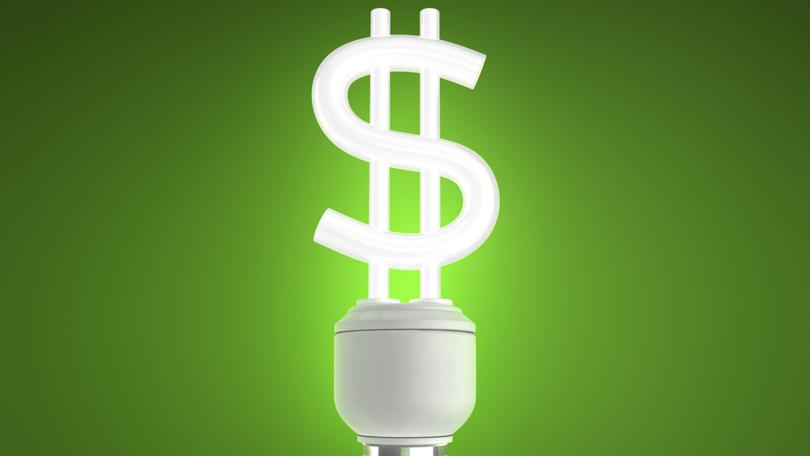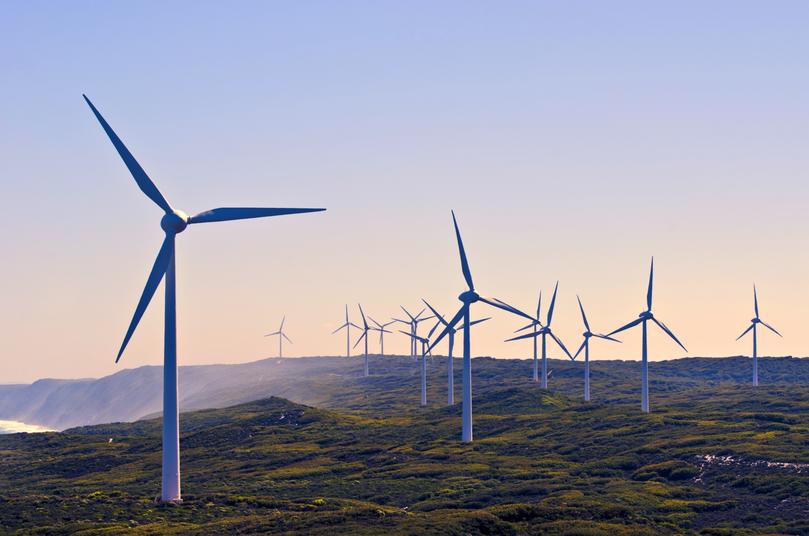PAUL MURRAY: It’s time to shed some light on the insanity of energy plans’ reliance on the unreliable

If advertising didn’t work it would have ceased to exist long ago.
And just like retailer Gerry Harvey, when governments decide to pay shedloads for high levels of repeated advertisement, they expect a result.
Advertising seeks to change human behaviour. It’s that simple.
Sign up to The Nightly's newsletters.
Get the first look at the digital newspaper, curated daily stories and breaking headlines delivered to your inbox.
By continuing you agree to our Terms and Privacy Policy.It shapes attitudes, creates desire and influences social norms. Inter alia.
Last week’s examination of the Albanese Government’s tax cuts campaign in this column struck a chord with readers who also question what they see and hear from politicians and appreciated the intervention of WA Auditor-General Caroline Spencer in the improper spending mess.
Governments increasingly rely on the trickiest of advertising tricks to get you to do and think what they want — and at your expense — without ever seeking permission to use your money in that way.
Whoever heard an election promise like this: “We intend to spend countless millions of dollars of your taxes to convince you to do things you probably don’t want to do. Please vote for us.”
Witness a Cook Government campaign underway that really deserves the Spencer treatment. The dodgy nature of the This is Climate Action advertising invites close scrutiny of what is being claimed — not only for what it says but also for the weaknesses it reveals in the Government’s “energy transition” strategy.
Just like Albanese’s tax cuts propaganda, this Labor advertisement has been on a loop on commercial radio stations:
“Cleaner. This is the WA of tomorrow. If we all take action today.
“WA is moving from coal to reliable energy, powered by renewable resources, backed by our gas and public energy assets.
“Our actions will secure affordable energy for years to come. Creating stronger communities and opportunities for future generations.
“This is Climate Action WA. To play your part, visit climateaction.wa.gov au. Authorised by the State Government, Perth.”
So, to save the planet, you only have to visit a website. As with the tax cuts ads, no one will race to that URL. It just validates the spending.
The message is wholly political. It’s not telling you to compost your kitchen waste or even save water. Or anything useful at all.
Just visit a website. For more taxpayer-funded virtue-signalling with an electoral end-point.
But let’s cut to the chase. The fundamental fault with that advertisement is its description of renewable energy as “reliable”.
Anyone who takes a dispassionate interest in the energy transition debate — rather than an emotional or ideological one — understands that the problem with wind and solar energy, in particular, is that they are not reliable.

Which sort of pulls the rug out from under the whole message. How is wind reliable when it doesn’t blow or solar when the sun isn’t shining?
They are inherently unreliable through the vagaries of nature. No amount of spin can change that.
After the unsubstantiated assertion of renewables’ reliability comes a disguised caveat. What does “backed by our gas and public energy assets” really mean?
On the bright side, at least the Cook Government is pushing back against the madness of the greenies and accepts an ongoing need for gas.
It appears the other “public energy assets” are Synergy’s new batteries, which could only fill a major power shortfall for a few hours before needing recharging.
But recharging from where when there’s little sun or wind and all the gas is being used to keep the lights on?
Interestingly, you will never see the cost of these firming backups included in any green claims about the low cost of renewable energy. Which is a bare-faced deceit.
According to Bjorn Lomberg — a climate science realist banned from the University of WA campus but now a visiting fellow at Stanford University’s illustrious Hoover Institution — when you reasonably include the cost of providing reliability, the real price of renewables explodes.
“One peer-reviewed study shows an increase of 11 to 42 times, making solar by far the most expensive source of electricity, followed by wind,” Lomberg wrote in The Australian two weeks ago.
“This is why global electricity remains almost two-thirds reliant on fossil fuels — and why we, on current trends, are an entire century away from eliminating fossil fuels from electricity generation.”
Given that the questionable advertisement was issued by the Department of Premier and Cabinet — one of the targets of the Auditor-General’s recent cold shower about government advertising — I sent Roger Cook some questions on Tuesday:
- What is the total approved spend for the current Climate Action WA advertising campaign? What is the planned duration of the campaign?
- The radio advertising script mentions that WA is moving from coal to “reliable energy”. Does this imply that our current energy system is unreliable?
- How does the Premier define “reliable” energy? For instance, would he regard solar and wind-generated energy as reliable?
- The radio script says coal will be replaced by renewables, backed by gas and “public energy assets”. What are these public energy assets?
- Is the projected “affordable energy” expected to be cheaper than current tariffs?
I got the usual unsatisfactory response from a Cook spokesman, who declined to address most of the questions directly. In a long career of political reporting, I have never experienced a government so unwilling to be accountable in the media.
But he did cough up that the campaign budget was $2.7 million, covered print, TV, radio and digital, and was due to end next month.
There was no attempt to answer any of the questions about reliability other than a reference to the investment in batteries at Kwinana and Collie and the support for gas as a firming fuel.
The rest was political spin about keeping key energy assets in public hands, even though most of the gas generation propping up the system — and a big proportion of Synergy’s purchased renewable energy — comes from private companies. Laughable.
As for the claims about “affordable” energy: “Our Government has kept household power bill increases below inflation for the past five years.”
Of course, repeatedly paying hundreds of dollars as handouts or rebates to subsidise individual householders’ power bills — even those who don’t need charity — can have that effect.
But those handouts don’t reduce the real cost of power and merely mask the basic “affordability” issue, which will eventually have to be addressed.
This week’s inflation figures show the failure of Labor’s energy policies nationally in reducing power prices.
“Excluding the rebates, electricity prices would have risen 13.9 per cent in the 12 months to April 2024,” the Australian Bureau of Statistics’ head of price statistics, Michelle Marquardt, said.
Even with the various handouts, power prices still rose 4.2 per cent, helping push up inflation by 0.2 percentage points, ruining hopes of a mortgage cut this year and postulating whether the Reserve Bank might lift the cash rate again soon.
Throughout this mainly still and cloudy autumnal week in Perth, the website of WA’s energy market operator, AEMO, has shown we depended on coal (37) and gas (45) for 82 per cent of the power in our electricity grid.
The Cook Government’s “reliable” energy sources provided just 13.8 per cent — wind (9.2), household solar (3.5) and commercial solar (1.1). At some periods, wind was as low as 4.4 per cent.
Groundbreaking computer modelling by energy expert Mark Chatfield shows that after coal is dismissed and replacement power sources are in line with the government’s strategy, the SWIS grid would risk blackouts on more than 100 days a year.
This is because not enough gas can come down the Damper-Bunbury pipeline to compensate for the shortfall of renewable energy in the peak summer heat and on the cloudy, still days of winter.
“In the base case, gas demand in the SWIS exceeded the assumed DBP delivery capacity 112 times over the 365 days modelled,” Chatfield’s research, outlined more fully in previous columns, concluded.
“This is clearly an unacceptable outcome in terms of the reliability of the SWIS. Examination of the results show that high gas demand occurred either on high demand days or low wind strength days, or both.”
So much for “WA is moving from coal to reliable energy”. Even gas won’t save us.
The government has already backed off its coal shutdown program once, keeping open the 200MW Muja 6 unit — originally slated for closure in October — after AEMO warned that without urgent investment in the State’s generation, transmission and storage systems, Perth faces a massive power shortfall from next year.
We just scraped by in the past two summers thanks to AEMO’s emergency procedures, which involved paying untold millions to big businesses to stop using power in peak periods.
That massive cost has never been admitted or quantified because it would embarrassingly highlight the crisis we face. Its existence makes the 2029 deadline look increasingly unrealistic.
The Government has no answers to the concerns AEMO raises, so it pumps out propaganda, hoping to keep the public in the dark.
